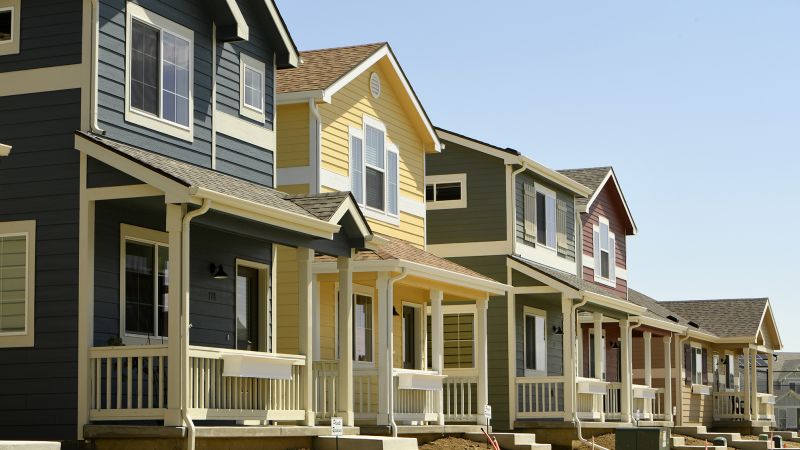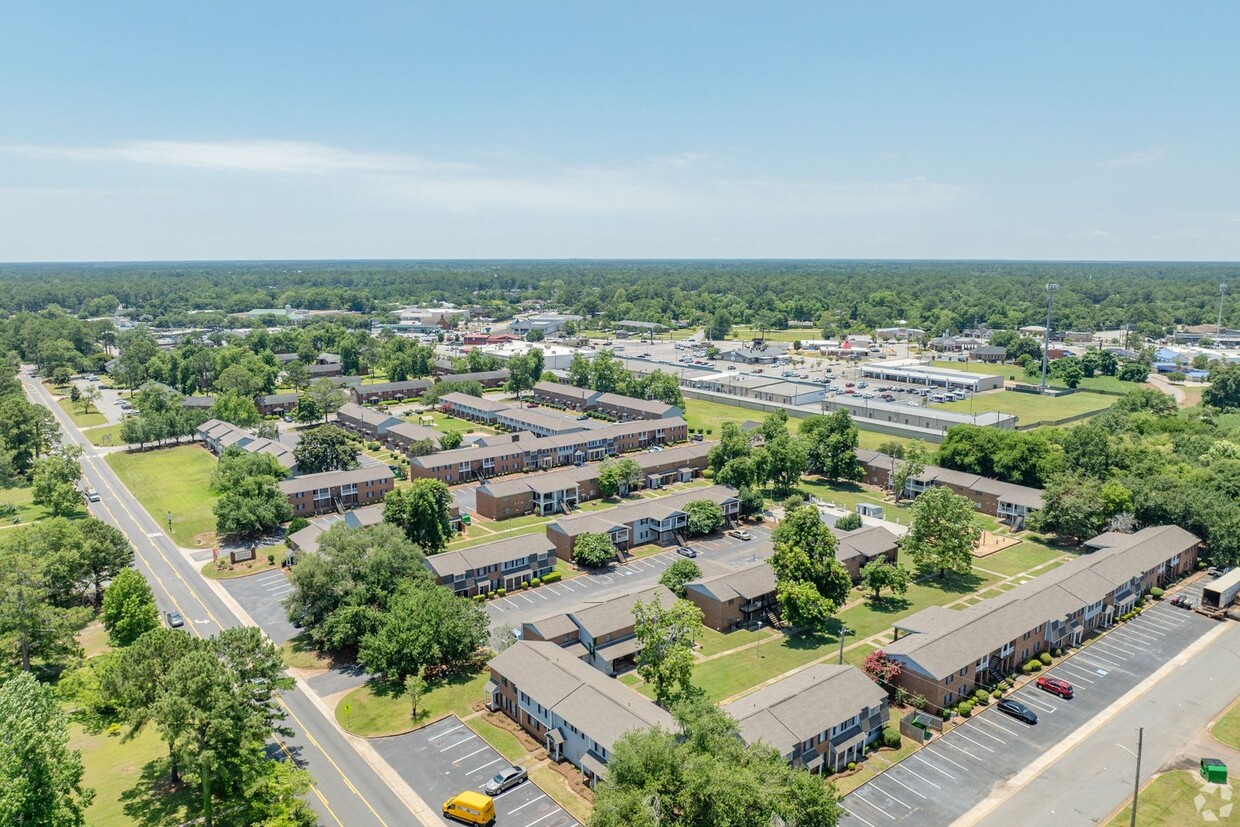A Beginner’s Guide to Understanding Multifamily Assets
A Beginner’s Guide to Understanding Multifamily Assets
Are you a commercial real estate investor looking to expand your portfolio into multifamily properties? Understanding the various multifamily asset classes is essential for making informed investment decisions.
In this beginner’s guide, we will explore the different types of multifamily asset classes, their unique characteristics, and the factors that can influence their performance in the market. Whether you’re new to real estate investing, interested in diversifying your portfolio, or simply looking to broaden your knowledge, this guide will provide you with valuable insights for successfully navigating the multifamily landscape.
TRADITIONAL MULTIFAMILY HOUSING
This multifamily asset class is by far the largest and most widely known form of rental housing, as it includes conventional residential buildings with multiple units, such as townhouses, condos, and garden-style communities, as well as mid-rise and high-rise apartment complexes. Traditional multifamily properties are an established subtype, meaning they generally have a proven track record of producing stable investment returns. These assets are often situated in developed markets and typically produce high occupancy rates and predictable rental income.
Primary Investor Types
Investors in traditional multifamily housing come from various categories, including institutional investors, private investors, and publicly traded and non-publicly traded companies specializing in income-generating real estate — also known as real estate investment trusts (REITs).
Financing
So, how can you invest in traditional multifamily? Like other commercial real estate investing, traditional multifamily investing is capital intensive. It’s rare for multifamily properties to be acquired entirely with cash, so nearly all options involve some form of debt financing. A common source for debt financing often includes conventional financing from banks. Banks are often the first option for construction loans, which are short-term loans that cover a portion of the cost of building these properties. Alternatively, for existing assets you can obtain debt financing from life companies, private equity funds, and agencies like Fannie Mae, Freddie Mac, and the Department of Housing and Urban Development (HUD). In recent years, debt funds have become increasingly popular, as these lenders are known for their higher leverage levels.
Other Key Characteristics
Traditional multifamily properties often have amenities like communal areas, laundry facilities, courtyards, and other outdoor spaces. You’ll find these investments in both urban and suburban areas, with the former typically offering higher earning potential from rental income.
The size and number of units in these buildings vary. You have the option to invest in a large complex with hundreds of apartments or a condo building with much fewer units. Many individual investors get started by purchasing a duplex or triplex, and then invest in larger properties with higher unit counts as they gain valuable experience in the rental market.
You can also find multifamily properties that generate rental income at both market rate and below-market rate. For example, luxury properties cater to a more affluent demographic, while government-mandated subsidized properties provide “affordable” housing to a working-class demographic.
Another thing you should know is that multifamily real estate is characterized by three distinct property classes:
- A: These are high-end properties with premium fixtures and finishes in desirable markets, such as downtown neighborhoods. As a result, they are considered one of the safest types of investments. These best-in-class properties are generally owned by developers, institutional investors, insurance companies, and pension funds.
- B: Class B multifamily properties are well-maintained and often located in middle-class neighborhoods, providing lots of earning potential. However, they might be in an older condition than class A properties and require improvements that eat into your profits.
- C: These properties are older and usually have basic, standard, or no amenities, making them more affordable for tenants. These homes might generate less rental income than class A and B real estate, but they are typically less expensive to purchase. However, some properties in this class may be in a poor state of repair, meaning you’ll need to invest in their upkeep. Class C properties also face limited competition from new construction and generally feature consistent levels of renter demand.
MANUFACTURED HOUSING COMMUNITIES
Manufactured housing communities, or MHCs for short, are factory-built residences placed on a piece of land, such as within a mobile home park. This asset class might suit you if you’re looking for an affordable investment that generates a stable cash flow. MHCs are an emerging asset class that has experienced recent growth. That’s because many people need cost-efficient homes with low operating costs.
Primary Investor Types
Private investors often purchase MHCs because of their ability to generate rental income and appreciate over time. Other investor types include government-sponsored subsidized housing programs that might buy up undeveloped land for sale for low-income communities.
Financing
Interested in investing in mobile home parks? You can obtain financing from a wide range of sources, including banks, private equity firms, and even crowdfunding. Agency financing is another popular way to fund these investments.
Other Key Characteristics
MHC amenities depend on the builder but can include communal gardens, children’s playgrounds, and gated entrances. Community sizes and number of units also vary, with large MHCs consisting of hundreds or even thousands of manufactured homes. Because they often occupy large areas, you’ll typically find MHCs in suburban or rural areas rather than city-center locations. MHCs usually offer affordable housing to low-income residents, although some communities now cater to the middle classes. Additionally, nearly half of all manufactured housing communities are age-restricted and cater to residents 55 and older. These communities often command higher rents and record less turnover than many forms of rental housing.
SINGLE-FAMILY BUILD-TO-RENT
This multifamily asset type refers to communities of single-family homes specifically built to generate rental revenue, allowing you to profit from a steady stream of income. An alternative to home ownership, single-family rentals are often low maintenance because of their recent construction. While the homes themselves often have less turnover and less maintenance required by the property owner, single-family communities are less dense and have more green spaces and common areas than a traditional apartment property. This maintenance is the responsibility of the owner or property manager. These communities are also built in strategically located neighborhoods, such as desirable areas of a city, increasing your earning potential. This emerging asset class helps you capitalize on rising rents in hot property markets.
Primary Investor Types
REITs, private equity firms, and individual investors might all invest in single-family rentals. Homebuilders also invest in these multifamily properties as an alternative to selling homes, which could prove lucrative in profitable rental markets.
Financing
A commercial loan from a bank is the most popular financing type for single-family build-to-rent. However, you might want to consider a construction loan to cover the cost of building these properties. HUD and other government-supported financing initiatives also provide funding opportunities.
Other Key Characteristics
Single-family buildings often include outdoor spaces, modern furnishings, and security features for residents. They might be large properties with multiple rooms or smaller units. The former will help you make more money from rental income.
You’ll almost always find single-family rentals in suburban areas, often in desirable neighborhoods with good schools and green spaces. These properties typically cater to middle-income families; however, you might want to invest in government-funded homes for low-income communities.
SENIOR HOUSING
Senior housing is a highly established multifamily property class that can produce lucrative returns on your investment. This asset caters to older adults, typically those in retirement, who might require home care nursing services or want to be with people of a similar age. As people are living longer, senior housing lets you earn a steady rental income over multiple years, with older adults tapping into their Social Security or private pensions to fund rental payments.
Primary Investor Types
Individual investors, private equity firms, pension funds, and life insurance companies might invest in this multifamily asset class. Since many forms of senior housing include some form of healthcare component in addition to the housing component, many investors of senior housing real estate specialize in this product type.
Financing
Funding options for senior housing include agency financing, traditional loans from banks, and equity financing. If you have a good credit standing, you’ll find it easy to obtain financing with competitive commercial loan interest rates and favorable terms.
Other Key Characteristics
Communal areas, private bedrooms, and accessibility fixtures for disabled residents are common amenities in senior homes. This property asset class tends to be on the larger side, with residences often consisting of hundreds of individual units. However, you might want to invest in smaller senior properties with fewer bedrooms. You’ll usually find homes for older adults in suburban areas. Additionally, government-subsidized programs might provide affordable housing options to low-income seniors.
AFFORDABLE HOUSING
Affordable housing is more difficult to define than other multifamily property types in this guide. However, HUD describes it as a household that pays no more than 30% of its annual income on housing, meaning residents still have money for other essentials such as food, transportation, and utilities. Affordable housing is an established asset class, but it has become increasingly popular among investors recently because of the potential for high rental income yields.
Primary Investor Types
Government agencies and non-profits have traditionally invested in affordable housing. However, private investors and REITs now invest in this property class to generate income from rental revenue.
Financing
You can finance this asset with a commercial loan from your bank, agency financing, or mezzanine financing. You might also receive the low-income housing tax credit (LIHTC) for building affordable housing.
Other Key Characteristics
Affordable housing amenities depend on the property type but might include communal outdoor areas, children’s playgrounds, and convenient access to public transportation. Housing sizes also vary and can range from large housing communities to small apartment complexes. You’ll find affordable housing in both city-center neighborhoods and suburbs. Because of rising living costs in recent years, some middle-income families might need access to affordable housing, however this property type typically caters to low-income communities.
STUDENT HOUSING
The final multifamily property type in this guide is student housing, which provides students in further or higher education with a temporary place to live. This established type of commercial real estate investing can provide great earning potential. That’s because students have a stable income from college savings accounts such as 529 plans, loans, grants, support from parents or relatives, and other types of guaranteed government funding. Students – and their families – recognize that housing is one of the costs associated with higher education, and these costs are often built into a college budget. One of the primary advantages of student housing from an investor’s perspective is that college enrollments rarely fluctuate from year to year, allowing for a predictable flow of students that require housing.
Primary Investor Types
The main investor types for this property sector are private investors, REITs, and student housing companies.
Financing
If you need funding for a student housing investment, consider traditional commercial loans from creditors, construction loans, and crowdfunding.
Other Key Characteristics
You’ll find communal areas, study areas, gyms or fitness centers, and controlled security access in many student housing complexes. Apartments are the main property type, though you might want to invest in houses for students living with their partners and/or children. Student housing is typically located close to college campuses, which can be situated in downtown areas, suburban communities, as well as small towns and rural environments.
Ready To Take the Next Step?
Now that you have a solid understanding of multifamily asset classes, it’s time to put your knowledge into action. Take advantage of the opportunities in the commercial real estate market by exploring our active listings for multifamily properties. Whether you’re looking for a value-add opportunity or a stable income-generating asset, our experienced team can guide you in finding the right investment for your goals, as well as securing the most appropriate financing solution. Don’t miss out on the potential returns and long-term benefits of multifamily investing. Connect with our team today and take the first step toward building a successful commercial real estate portfolio.
Final Thoughts: Remember, investing in multi family housing portfolios requires due diligence and careful consideration. It’s essential to align your investment goals, risk tolerance, and values with the opportunities available in the market.




Recent comments